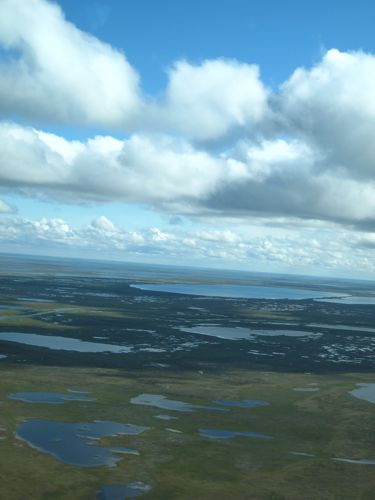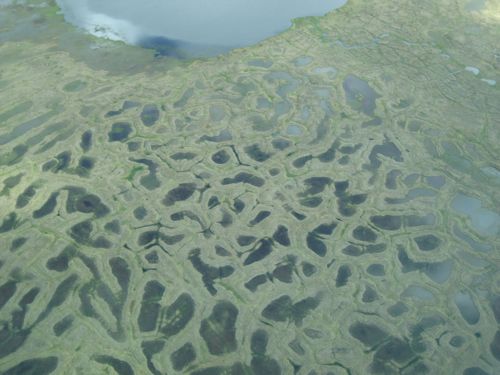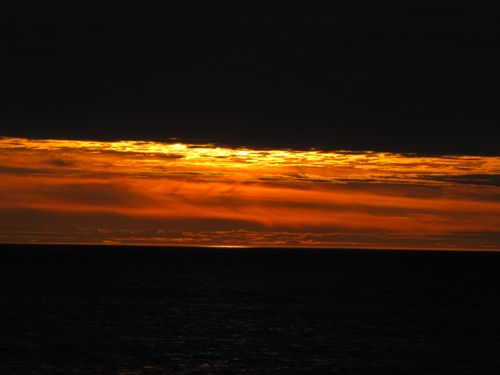I’ve been travelling for 45 days, stopping home for no longer than three days. It’s just long enough to unpack, do laundry, visit my grandparents and mom to give them a hug and tell them I love them, repack, and head back to the airport. The last few days and weeks I’ve been tired, real tired…and dragging, just going through the motions of putting one foot in front of the other. I miss my family (both my Ohio and New York family). But today…
Today I came to Atqasuk. It’s less than sixty miles south of Barrow; however, you can only reach it by plane. I boarded another dinky Cessna Caravan that seats 10 people, only this time the back half of the cabin was loaded with boxes and freight. People were bringing their groceries to Atqasuk, a village of less than 200 people, with only one school, a dirt runway, and no store. I thought I would take a much-needed twenty-five minute nap…but then the plan took off…
I didn’t even notice when the plane left the ground. I looked down and realized we were flying. We soared into a fog that made for zero visibility. Soon though we were above the fog and I got to see the ice polygons that Rob had told me about… I realized that I was flying in over the Arctic TundraA treeless area between the icecap and the tree line of arctic regions, having a permanently frozen subsoil and supporting low-growing vegetation such as lichens, mosses, and stunted shrubs. and as I gazed in awe at the beauty of the ice polygons I started thinking…


I’ve seen more volcanoes than I can count in Costa Rica, Seattle, and Alaska. I even got to see them smoking and erupt in Costa Rica. I’ve seen and held periphyton algae in both the Everglades and the TundraA treeless area between the icecap and the tree line of arctic regions, having a permanently frozen subsoil and supporting low-growing vegetation such as lichens, mosses, and stunted shrubs.—it feels slimy and kind of disgusting but without it there no life in either ecosystem. I’ve seen alligators, sloths, toucans, capuchins, pit vipers, tarantulas, bears, loons, salmon, lemmings, and jellyfish all up close and personal in their natural environments. I stood less the ten yards from a bear as it ate the sockeye salmon it caught for lunch. I’ve zip-lined hundreds of feet above the rainforest canopy. I’ve met amazing people with incredible stories from all over the world. I’ve learned more about science, history, politics, and the world in general in these 45 days than I ever dreamt possible. I drive an ATV. I’ve walked in the tundra and learned scientific names. I can even talk like a scientist now! I’ve witnessed the most spectacular sunsets where the sun never falls below the horizon…


I’m just an ordinary teacher who was given these extraordinary opportunities to learn about the world and share what I learn with my students. I’ve been given a gift. Even though I’m tired, this is the adventure and experience of a lifetime, so I can’t complain. I’m so grateful that the committees chose me. And tomorrow, because of people whom I have never met and probably never will, I’ll walk in a new and different tundra…and I’ll have yet another story to share…


Comments